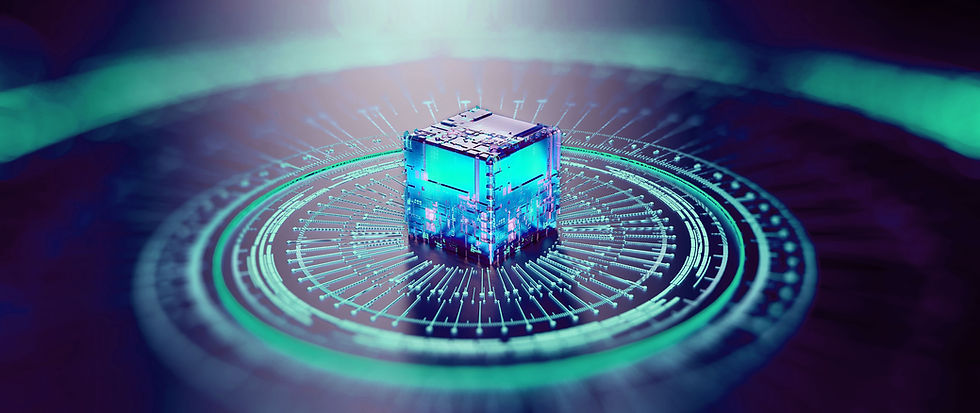Gen AI: Capturing Real Results Beyond Productivity
- Pi Building
- Dec 26, 2024
- 3 min read
Updated: Dec 29, 2024
Artificial Intelligence (AI) has long been heralded as a game-changer for productivity across industries. However, recent advancements in Generative AI (Gen AI) are redefining this paradigm, shifting the narrative beyond mere efficiency to value creation, innovation, and transformative impact. This article explores how Gen AI is empowering organizations, the considerations for assurance and risk, and its emerging applications in the building industry.
Empowering Productivity and Beyond
Generative AI—a subset of AI capable of creating new content such as text, designs, and models—is enabling businesses to do more than automate repetitive tasks. Companies like OpenAI, Google DeepMind, and Microsoft are leading the way, showcasing Gen AI’s ability to enhance human creativity and decision-making. According to a recent McKinsey report, Gen AI has the potential to automate up to 60% of a worker’s time on knowledge-based tasks, such as drafting reports or generating design concepts, freeing up resources for strategic initiatives.
In the building industry, AI tools like generative design software are enabling architects and engineers to create optimized layouts, simulate structural performance, and design sustainable buildings at unprecedented speeds. For instance, Autodesk’s Generative Design tool empowers professionals to explore thousands of design permutations, balancing aesthetics, functionality, and sustainability goals.
Deriving Value Through AI
The value derived from Gen AI is not limited to productivity gains; it extends to innovation and strategic advantage:
Enhanced Collaboration: AI-driven tools like ChatGPT or Jasper AI facilitate real-time content generation, ensuring teams can produce cohesive plans, proposals, and project updates quickly.
Data-Driven Insights: Tools such as Tableau with AI capabilities help visualize and interpret large datasets, enabling decision-makers to foresee project outcomes, budget deviations, and risks.
Sustainability: Generative AI is increasingly being used to optimize energy efficiency and resource utilization. For instance, AI-powered Building Information Modeling (BIM) systems allow developers to simulate and predict energy usage before construction begins.
AI Applications' Assurance and Risk Considerations
While Gen AI offers tremendous potential, it’s imperative to address assurance and risks:
Data Security and Privacy: Ensuring that sensitive project data remains protected is crucial. Companies must adopt stringent data governance policies and leverage AI tools that comply with regulations like GDPR or ISO 27001.
Bias and Fairness: AI models must be trained on diverse datasets to prevent biased outcomes that could lead to flawed designs or discrimination.
Accountability: As AI systems make decisions, defining accountability—whether for errors in design or budget overruns—becomes vital.
System Reliability: Regular audits and testing of AI systems ensure they perform consistently and meet project-specific requirements.

AI Tools Transforming the Building Industry
Generative AI applications in the building industry are rapidly expanding. Below are key tools and technologies making an impact:
Generative Design Software: Tools like Autodesk’s Generative Design and Spacemaker use AI to create optimal design layouts, balancing constraints such as cost, materials, and environmental impact.
BIM with AI: Software like Revit and ArchiCAD integrates AI to enhance project planning, clash detection, and lifecycle management.
Construction Robotics: AI-powered robots like Boston Dynamics’ Spot can automate site inspections, reducing human error and increasing efficiency.
Digital Twins: Platforms such as Siemens’ Teamcenter allow developers to create virtual replicas of buildings for predictive maintenance and performance optimization.
Predictive Maintenance Tools: Solutions like IBM Maximo leverage AI to forecast equipment failures and schedule proactive maintenance, reducing downtime.
Sustainability Analytics: Tools like Tally and Cove.Tool use AI to assess a building’s environmental footprint and recommend sustainable design adjustments.
The Road Ahead
As Gen AI continues to evolve, its role in the building industry will expand, offering opportunities to reimagine construction, operations, and asset management. However, organizations must navigate the associated risks with a robust framework for AI governance and ethics. By doing so, businesses can not only harness AI’s potential for productivity but also drive innovation, sustainability, and value creation.
The building industry stands at the precipice of a transformative era where technology and creativity converge. With careful planning and ethical implementation, Gen AI can become the cornerstone of a future defined by smarter, more sustainable infrastructure.






Comentários